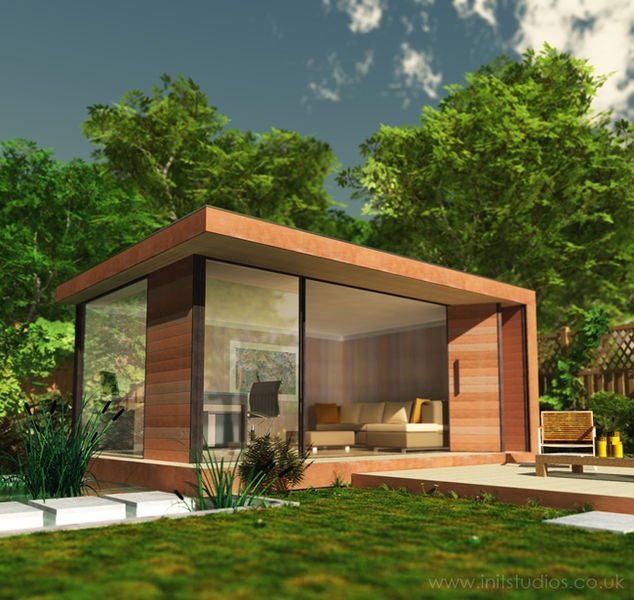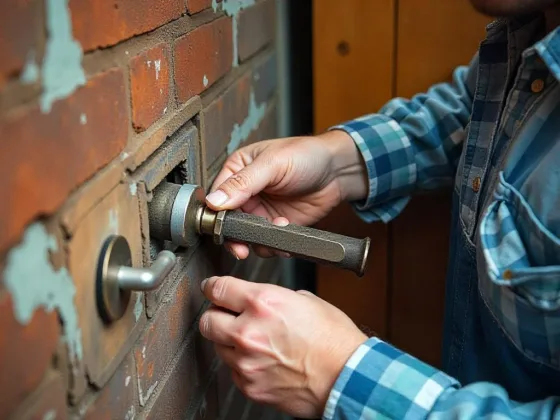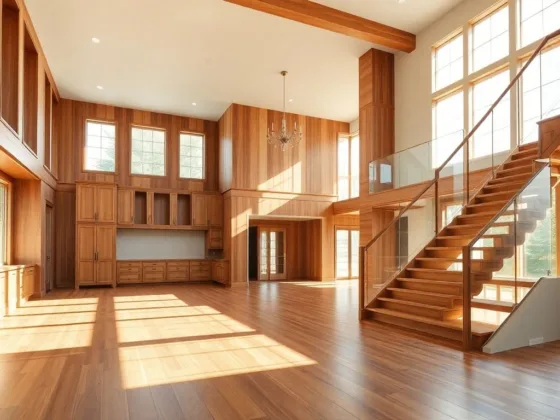Table of Contents Show
Working in the country, no long commutes, and yet separated from the hustle and bustle in your own house the garden office is becoming increasingly popular in times of the Corona.
It can be the optimal solution if you don’t have space for a study in the house, but you have a sufficiently large garden. A garden is often better suited for a home office than the basement.
We’ll show you what you need to know about the garden office, what different options there are, what you have to consider and how much the home office in the garden costs you.

What is a Garden Office?
Garden offices are trendy. And not just since, due to the corona pandemic, more and more people have been working from home.
The so-called “garden office trend” has been observable since 2005. Since the outbreak of the pandemic, however, it has received another major boost – Google search queries have increased massively.
A garden office is a room or small house that serves as an office. In English, it is also known by the acronym “Suffice” (for ‘shed’ = ‘hut’ and ‘office’ = ‘office’).
The little houses can either look like a classic garden shed or an office cubicle that is stylish and modern in design.
Garden offices are usually equipped with a desk, computer, telephone, office chair, and possibly additional chairs for guests. The garden office has everything that a “normal” study has.
Garden offices are usually completely separated from the actual house, which allows you to work there professionally and in peace.
What Offers are There for Garden Offices and What Do They Cost?
There are numerous ways in which you can get to your garden office. There are also a wide variety of prefabricated garden houses and prefabricated garden offices or modules made of different materials such as wood or stainless steel.
Of course, they also differ in size and equipment. Sometimes they even come with a small terrace and separate rooms.
The Classic Garden House as a Garden Office
On the one hand, already finished garden houses are suitable, which you can then convert into an office. In any case, you should make sure that there is sufficient insulation, after all, you want to be able to work in your garden office in winter too. Therefore, the walls should be at least 40 millimeters thick.
What you also need: light. Classic garden houses do not always have windows. Make sure not only that there is sufficient light, but also that the windows are double-glazed so that you do not freeze in winter. You can get such garden houses from around 1,500 euros upwards.
Modern garden houses, which are suitable as office space, are offered by Cube fx, for example, with its modular living models of the “Deluxe Line”.
They are made of stainless steel, have double-glazed floor-to-ceiling or panoramic windows, full insulation, and are maintenance-free. They cost around 9,000 euros upwards.
Modules for the Garden Office
There are also providers who offer special garden offices or garden office modules. And also in different sizes, for example with a floor space of only four square meters. You can get these special “offices” for around 10,500 euros.
Because the garden office is becoming more and more popular, there are of course more and more offers.
For example, the British manufacturer Koto produces sophisticated prefabricated wooden houses and work pods that meet the highest design standards.
However, modern garden sheds also have their price. Koto houses are available for around 29,000 euros.
Read Also:
Pods for Working in the Garden
The study from the Norwegian manufacturer Livit also comes in a very modern design. The practical thing about the Studypod: You can set it up anywhere in your garden.
The cabin can also be equipped with wheels, so you can always roll it to the right place as needed. There are already lamps, a light switch and a socket in the Studypod. In the basic version without equipment, the Studypod costs 11,900 euros plus taxes.
How you can set up your garden office, we give tips and hints in our article ” Set up your workplace”.
You can also have your garden office made to measure according to your wishes. This is what the German provider ” Gartenhausfabrik” offers, for example.
Of course, experienced do-it-yourselfers can also build the garden office themselves. You can find numerous tips and blueprints on the Internet.
Alternatively, you can also use a tiny house as a home office.
What do you Have to Consider in Terms of Building Law?
Whether you need a building application for your garden office depends on the regulations in your state. For an ordinary garden shed, which can be used as a tool shed, for example, you usually do not need to submit a building application.
However, a garden office is a lounge and, according to building regulations, it is seen as an extension of the living space. It may also be that you can set up your garden office process-free, but only in certain places in the garden.
In any case, you have to set up the garden office at a sufficient distance from the property line, which is usually three meters.
However, you can submit an exception or exemption application to the responsible local building authority. This works, for example, if the neighbor agrees to your project in writing or has built close to the border himself.
There can be other reasons that thwart your gardening office. These can be in the community’s development plans, in neighboring protection, or if trees that are protected for this are damaged.
It can be difficult with the garden office, especially in the case of terraced houses or model settlements. It is best to check with your local authority to find out what is acceptable before setting up your gardening office. In this way, you avoid unnecessary fines.
Which Cables Do You Need for Your Garden Office?
A full garden office needs several connections:
- Electricity for light and electrical devices such as computers, telephones, coffee machines, and the like
- Water connection
- Internet and telephone connection
The best way to get electricity, internet and the like depends on where your garden office is located. You can usually connect electricity from the main house to your office with the help of an underground cable.
You get WiFi with the help of one or more repeaters, which amplify the WiFi signal. An alternative is to lay a LAN cable underground from the main house to the garden office.
In the house, you can then connect it to a WiFi router again. It makes most sense if you lay it together with the power cable – so you only have to dig up the garden once.
Of course, everyone decides for themselves whether you need a water connection or even your own toilet in your garden office.
If you want a water connection, you should think about it when planning the garden office. Retrofitting with a water connection is far more complex – and accordingly more expensive.
Whether you need a permit for a water connection in your garden office again depends on the local regulations.
For a toilet or sink with a wastewater connection, you also have to keep an eye on the wastewater charges. As I said: As a precaution, ask the local building authority.
As a rule, you also need a suitable foundation for your garden office that you can build on. You should also insulate the house well and have a heating facility.
In most cases, however, an electrically operated fan heater or infrared heater is sufficient at least if the house is well insulated and the heat does not escape immediately.
If the garden office is very close to your home, it may even be possible to connect it to the central heating.
What Tax Advantages Does a Garden Office Offer?
Like a study, you can also deduct a garden office from the tax. You can claim all costs as business expenses and write off the garden office yourself.
However, because it is a movable asset, only over 16 years, every year at 6.25 percent. Those who are self-employed also save sales tax.
In order for the garden office to be assessed as an office by the tax office and completely deductible, it must meet certain requirements:
- It has to be free-standing and used entirely as an office. You shouldn’t keep your garden tools in one part or set up sleeping accommodation for guests there.
- The office shouldn’t be too small. A size of ten square meters or more is recommended.
- Your garden office must be usable as an office all year round. So you need a heater, windows with double glazing and a certain wall thickness.
Advantages of the Garden Office
It is not for nothing that garden offices are becoming increasingly popular. Because working in your own garden has many advantages:
- You save yourself the way to work and not only time but also costs, stress, and possible virus infection.
- Working in the country you always have a nice view of nature when you work in the garden office.
- You are on your property, but spatially and acoustically separated from the main house. So you can work in peace and have a place of retreat.
- You can claim your garden office for tax purposes.
- There is no rent for a separate office or coworking space. You only have the one-time acquisition costs as well as the regular costs for electricity, internet, and sewage.
- If your garden office is big enough, you can even receive customers or colleagues there – in a beautiful setting, that makes a difference.
Disadvantages of a Garden Office
But a garden office also has some disadvantages:
- You have to observe building regulations. A garden office may not be an option for you even if you have a garden.
- The acquisition costs are quite high depending on which garden office you choose. You should already have a certain budget for the house and the furnishings.
- Depending on where the gardening office is located, it can get complicated with electricity, internet, or sewage.









